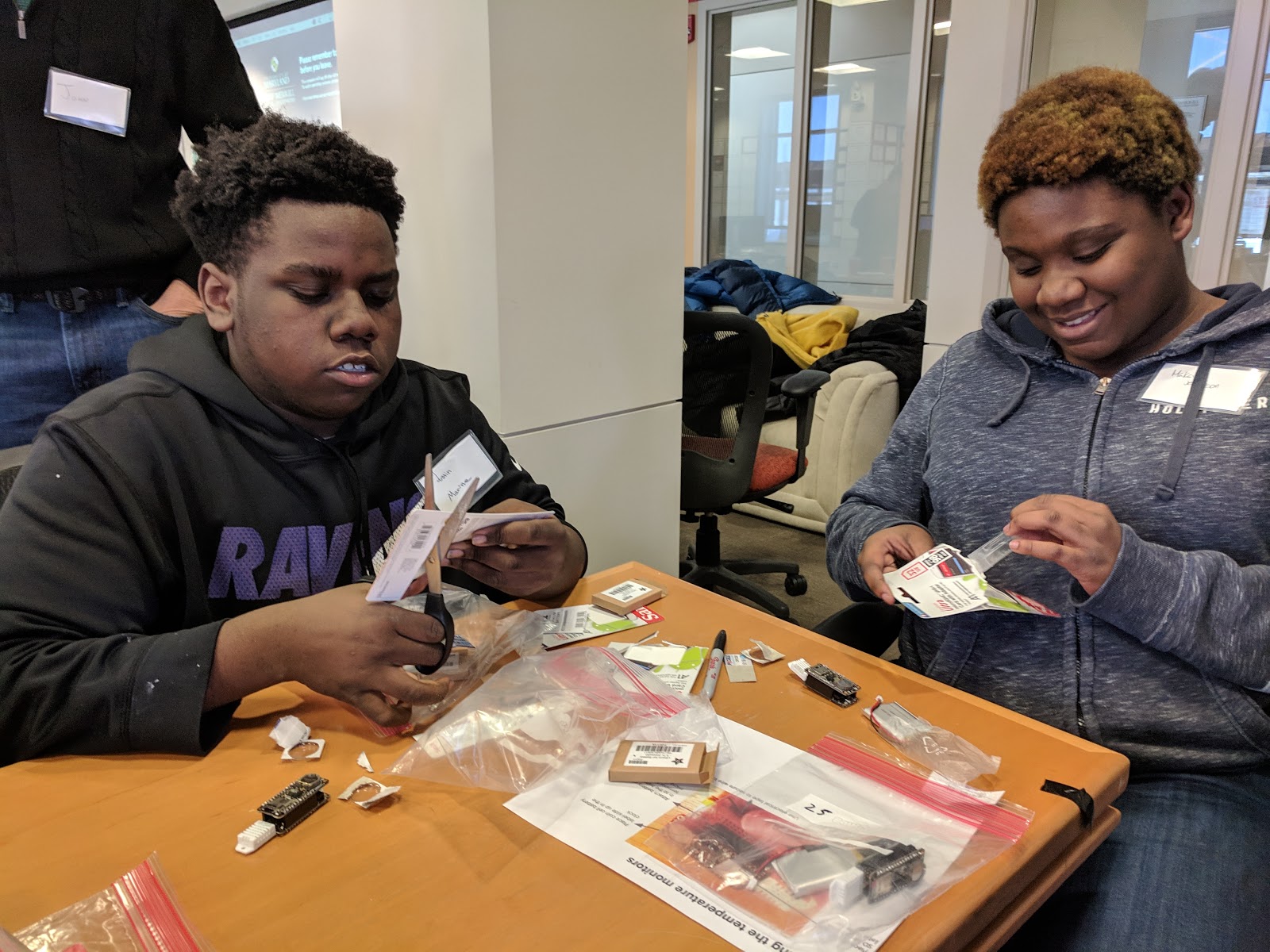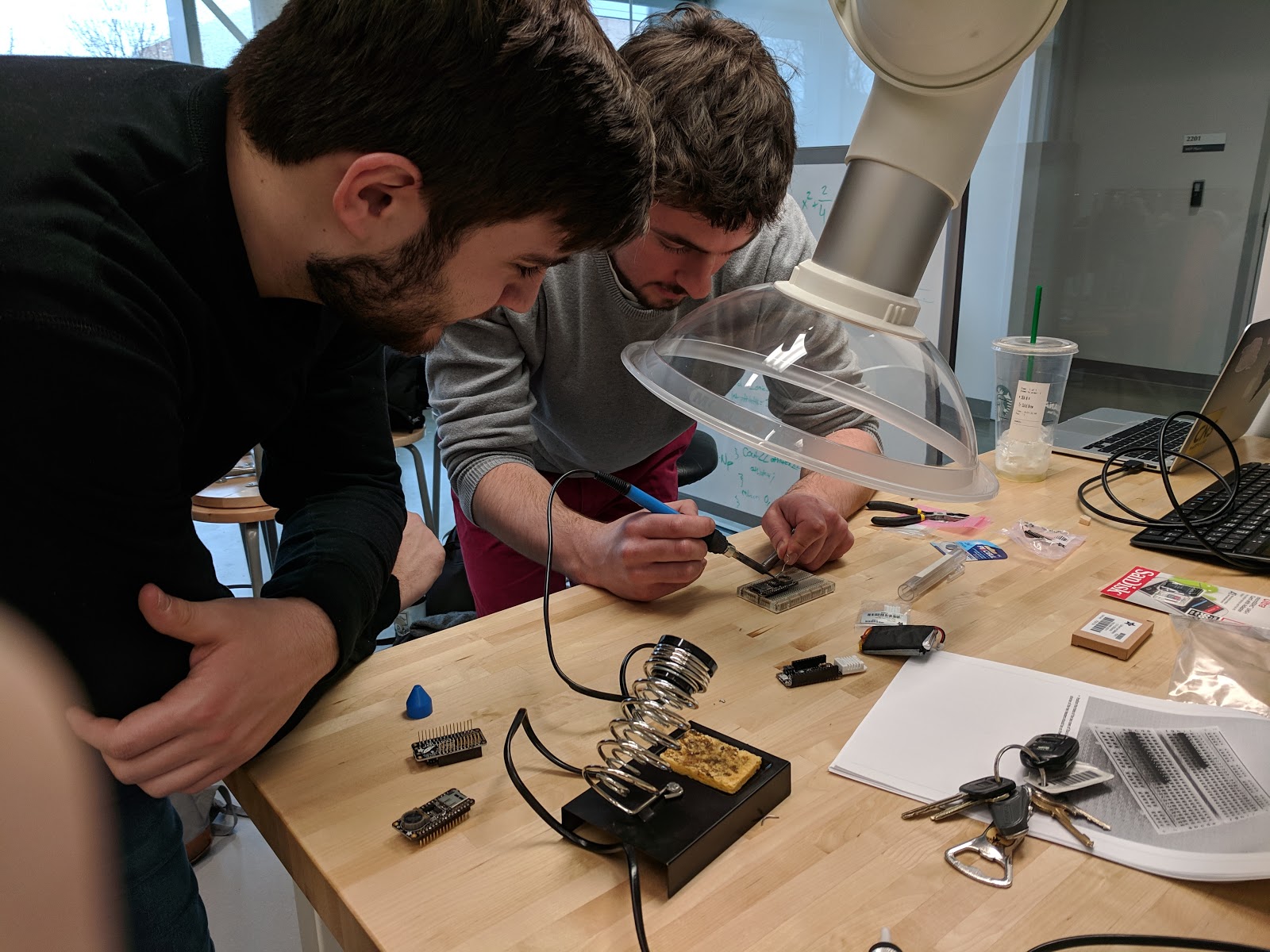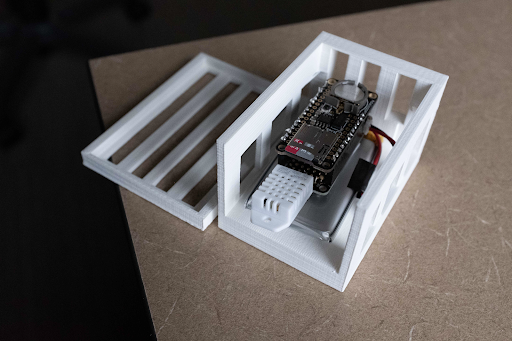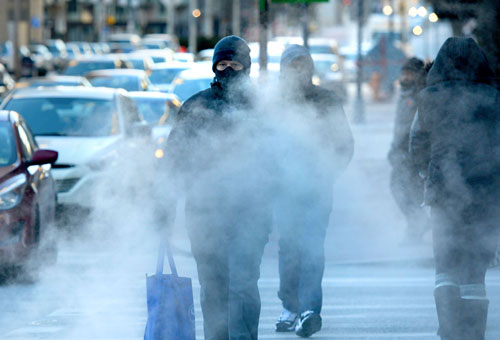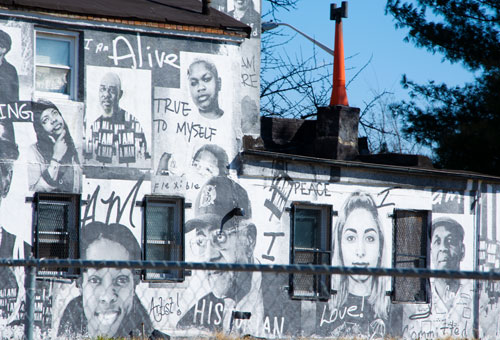“Bitter Cold” is an investigation by Capital News Service into how climate change is affecting public health and how those health effects are often felt most acutely by the people least prepared to deal with them.
WITH SENSORS, RECORDING EXTREME TEMPERATURES INSIDE BALTIMOREANS’ HOMES
Over the last six months, journalists at Capital News Service have been building temperature monitors and placing those sensors in the homes of Baltimore residents participating in the project. These sensors record the temperatures that residents live with in winter and summer. The team has placed about 40 sensors so far and will install more in Baltimore homes over the coming months to measure temperatures in the summer. Learn more about the project from the Baltimore Climate and Health Project blog and sign up to get updates with our weekly e-newsletter.
The CNS use of sensors is modeled after WNYC’s and AdaptNY’s 2016 Harlem Heat Project, which found that though temperatures oscillated outside on the hottest days of the summer, indoor temperatures remained unbearably hot. John Keefe, formerly of WNYC and now with Quartz, published open-source code for the construction and use of the sensors, which allowed CNS to use the same technology for the Baltimore project. The seed funds to pay for sensor components and other aspects of this project came from the Online News Association’s Challenge Fund for Innovation in Journalism Education.
In January, CNS journalists soldered together the structural components of each sensor while members of Wide Angle Youth Media — a Baltimore-based youth program that provides media education and resources — helped install batteries, memory cards and temperature cases.
Each device includes a monitor — which is made up of a small computer, a temperature sensor, a clock, batteries and a memory card — that allows the device to record, track and store information. The sensors are designed to activate every 10 seconds and record temperature, humidity, date and time before becoming idle again.
CNS journalists placed each sensor in an unobtrusive, well-ventilated location that does not receive any direct sunlight and that is unlikely to be disturbed during the data-gathering period.
As a precaution, every device is housed in a 3D-printed case built to prevent damage while the sensors are in use.
Capital News Service and partners
Capital News Service is a student-powered news organization run by the University of Maryland Philip Merrill College of Journalism. For 26 years, we have provided award-winning coverage of issues important to Marylanders. For this investigation, Capital News Service partnered with Wide Angle Youth Media, a Baltimore non-profit that teaches digital media skills to young people ages 10-24 around the city.
Financial support for this project was provided by the Online News Association, the Park Foundation, the Annie E. Casey Foundation and the Philip Merrill College of Journalism at the University of Maryland.
Reporting and writing: Abigail Bentz, Leah Brennan, Joe Catapano, Jake Gluck, Noah Johnson, Danielle Kiefer, Julianna Larsen, HaeMee Lee, Dan Novak, Ian Round and Aaron Wilson
Photography: Abigail Bentz, Jerry Jackson (The Baltimore Sun), Julianna Larsen, HaeMee Lee, Dan Novak, Ian Round, Aaron Wilson, and Wide Angle Youth Media students Travis Stanley, Otto Blais-Nelson and Justin Marine
Graphics: Abigail Bentz, Joe Catapano, Jake Gluck, Noah Johnson, Danielle Kiefer, Julianna Larsen and Aaron Wilson
Design and development: Abigail Bentz and Julianna Larsen
Data analysis: Joe Catapano, Theresa Diffendal, Jane Gerard, Jake Gluck, Samantha Hawkins, Noah Johnson, Mo Nguyen and Aaron Wilson
Video: Sydney Wess
Editing: Brooke Auxier, Sandy Banisky, Emma Bergman (Wide Angle Youth Media), Josh Davidsburg, John Fairhall, Martin Kaiser, Robert Little (NPR), Adam Marton, Sean Mussenden and Krishnan Vasudevan
Social Media: Brittany Goodman
Wide Angle Youth Media: Emma Bergman (Staff), Jennifer Hope Miller (Staff), Tia Price (Staff), Travis Stanley, Kyla James, Makayla Jefferson, Otto Blais-Nelson and Justin Marine
Climate
Climate change in Maryland is not just about hotter summers. Despite the overall warming trend, expect periods of severe cold in the winter. Read the story.
Health
Cold weather has a profound effect on public health, worsening certain chronic conditions and disproportionately affecting some groups. Read the story.
People
At the heart of the issues of climate change and public health are residents trying to stay well in the cold. Read the story.
Safety Net
What are government agencies and institutions in Baltimore and Maryland doing to help people affected by the cold? Read the story.
